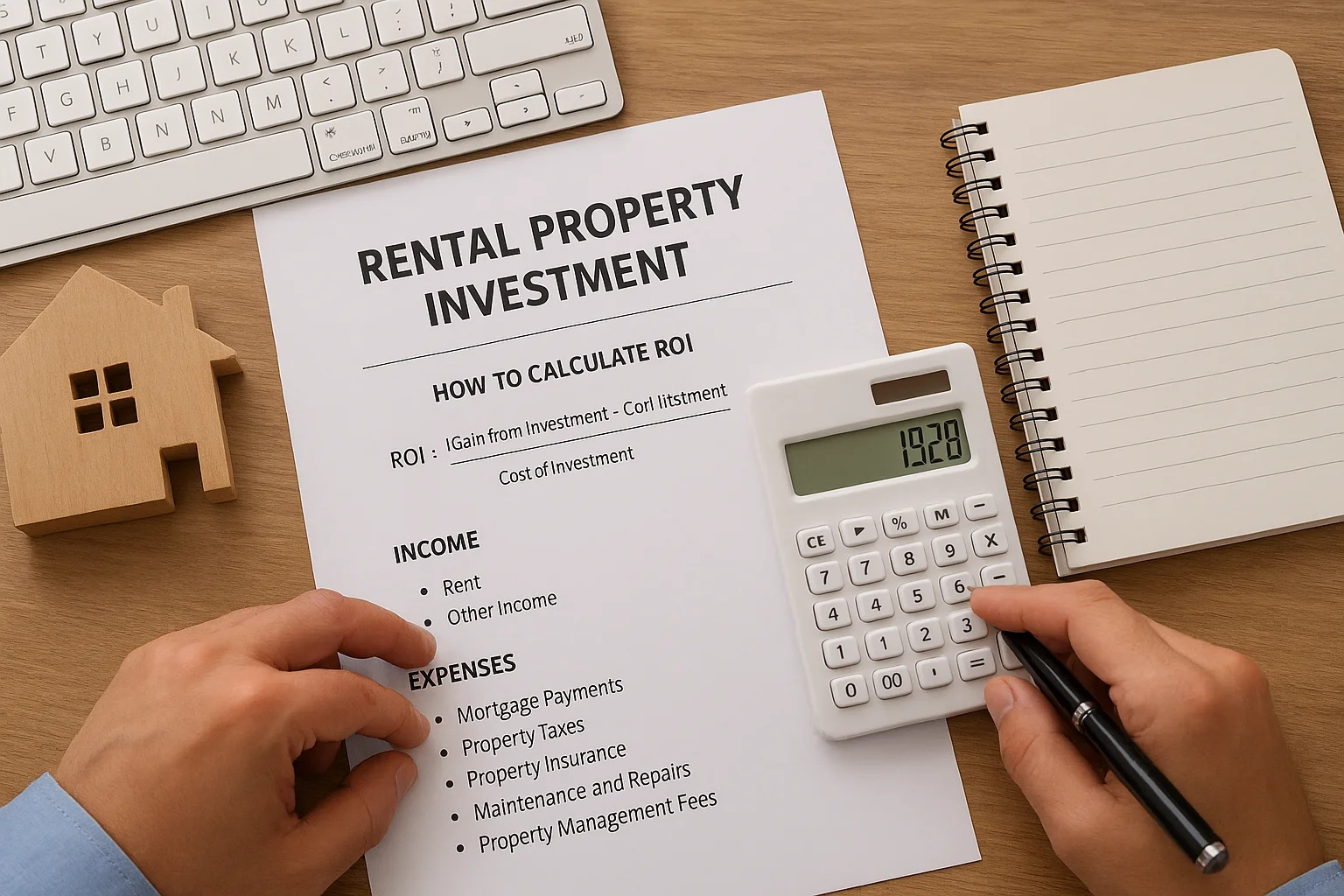Investing in rental property can be one of the smartest ways to build wealth and generate passive income — if you know how to measure the returns correctly. Many investors dive into real estate without understanding how to evaluate whether a property is truly profitable. Calculating ROI (Return on Investment) is essential to making informed, confident decisions in real estate.
1. Understanding ROI in Real Estate
ROI, or Return on Investment, represents how much profit you make from your investment compared to the amount you’ve spent. It helps you assess whether a rental property is worth your time, effort, and capital. In real estate, ROI can be calculated in a few different ways depending on whether you’ve financed the property with a loan or paid for it in full.
Formula (Basic ROI):
ROI=Net Annual IncomeTotal Investment×100ROI = \frac{Net\ Annual\ Income}{Total\ Investment} \times 100ROI=Total InvestmentNet Annual Income×100
For example, if you purchased a property for ₹1 crore and earned a net annual income of ₹8 lakh after expenses, your ROI would be 8%.
2. Determining Your Total Investment
Before you can calculate ROI, you must determine how much you’ve actually invested. This includes:
-
Purchase Price: The cost of the property itself.
-
Closing Costs: Registration, stamp duty, and legal fees.
-
Renovation & Repairs: Any upgrades made to make the property rental-ready.
-
Maintenance & Management Costs: Ongoing expenses like cleaning, painting, or property management fees.
Add all these together to find your total investment cost.
3. Calculating Net Annual Income
Net income isn’t just your rent — it’s your rental income minus expenses. These typically include:
-
Property taxes
-
Maintenance and repair costs
-
Insurance
-
Property management fees
-
Utility bills (if paid by the owner)
Let’s say you rent a property for ₹60,000/month (₹7,20,000 annually). After deducting ₹1,20,000 in maintenance, taxes, and insurance, your net annual income is ₹6,00,000.
4. Evaluating Rental Yield
Rental yield is another way to understand your property’s earning potential. It measures how much annual income a property generates relative to its market value.
Formula:
Rental Yield=Annual RentProperty Value×100Rental\ Yield = \frac{Annual\ Rent}{Property\ Value} \times 100Rental Yield=Property ValueAnnual Rent×100
If your property is valued at ₹80 lakh and earns ₹6 lakh per year in rent, your rental yield is 7.5%. A higher yield means a better return, though it’s also important to consider long-term appreciation potential.
5. Analyzing ROI with Financing
If you’ve taken a loan to purchase your property, your ROI should account for the down payment and loan interest. For instance, if you paid ₹25 lakh as a down payment and your yearly mortgage payments total ₹4 lakh, subtract those payments from your annual income before calculating ROI.
This approach gives a more accurate picture of your cash-on-cash return, showing the actual return on the money you’ve invested upfront.
6. Benchmarking with Properties for Rent in Bangalore
To better understand whether your investment is performing well, compare it against similar Properties for Rent in Bangalore. This helps you gauge competitive rental rates, occupancy trends, and average yields across different localities. Bangalore’s dynamic market, driven by IT professionals, startups, and steady demand for urban housing, often provides above-average ROI for well-located rental properties. Areas like HSR Layout, Whitefield, and Sarjapur Road continue to show strong appreciation and consistent rental demand — making them ideal for long-term investors.
7. Considering Appreciation and Total Return
ROI isn’t limited to rental income alone. Property appreciation — the increase in your property’s market value over time — plays a major role in total return. For example, if your ₹1 crore property appreciates by 10% over three years, that’s an additional ₹10 lakh in unrealized profit.
When you factor in appreciation plus rental income, you get a more holistic understanding of your property’s true earning potential.
8. Use ROI to Make Smart Investment Decisions
Calculating ROI helps investors:
-
Compare multiple properties
-
Assess long-term profitability
-
Identify high-performing locations
-
Understand when to buy, sell, or hold
However, remember that ROI is only one piece of the puzzle. Market stability, future infrastructure projects, tenant demand, and neighborhood growth potential also impact long-term success.
Final Thoughts
Rental property investment is a powerful wealth-building tool — but only when guided by numbers, not guesswork. By understanding and accurately calculating ROI, you can make more confident and profitable investment decisions. As the Bangalore real estate market continues to thrive, choosing the right property, managing it well, and tracking its ROI over time can lead to sustainable, long-term gains.







